theres several different potential sources for the oil in the intake runners, obviously locating the source is mandatory to resolving the problem, but its very common in the intake to find the runner surfaces coated with a light coat of dark oily staining.
oil on the plugs but mostly dry intake ports is usually rings,
soaked intake ports is usually a leaking intake gasket,usually sucking oil from the lifter gallery if you don,t use a thick enough intake gasket that gets compressed during the instal of the intake manifold or one thats been incorrectly angle milled, or mated to angle milled heads
oil only on the back of the valves and lower intake runner and plugs is usually bad valve seals and guides, but rarely its oil leaking thru the rocker stud threads if sealant on the threads was not used
but keep in mind REVERSION PULSES in the intake can spread oil over the runner and plenum in some cases
if youve ever installed a longer duration cam in a tuned port engine design, your very likely to find the intake runners show a light oil discoloration as the engines allowing those long runners to draw oil up out of the cylinders at lower idle speeds during the cams over lap timing.
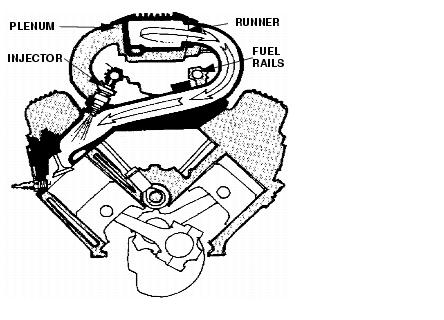
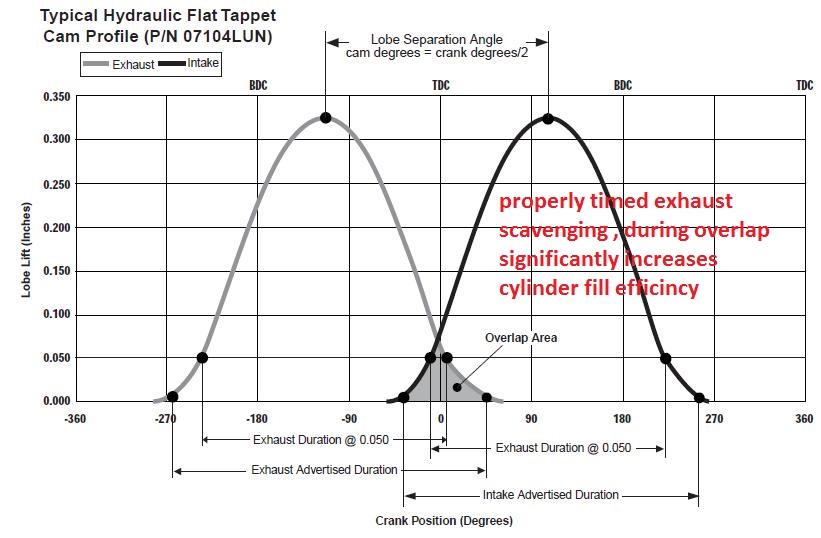
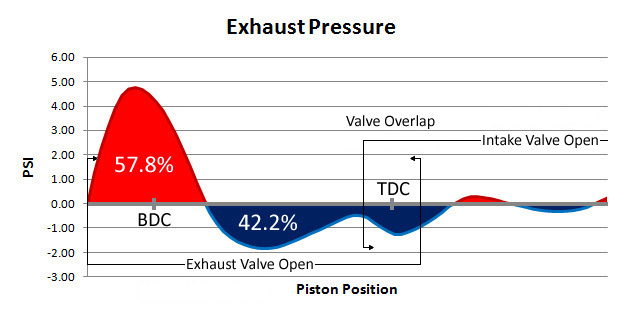

do a google search on (SLIPV618)its a bore scope I use and it easily slides thru a spark plug hole
http://store.dejavujewelry.com/tlw-slipv618.html
While its not a totally definitive test , but it will give you a good bit more info
have a friend follow you in his car ,someplace safe , to test drive your car like a long stretch of back rural road,, put the car in gear and run it up during hard acceleration at full throttle to lets say 5000rpm, then suddenly let the throttle snap closed and let engine compression slow the car, heavier smoke during hard acceleration when cylinder pressures high and intake vacuum is low generally indicates worn rings or piston damage, heavier smoke during deceleration as you let the engine drag the cars speed down, when the cylinder pressures low and intake plenum vacuum is high generally indicates bad valve seals or worn valve guides, be aware that a leaking intake gasket can suck oil into the ports from the lifter gallery also. obviously a LEAK DOWN test in conjunction gives you a better picture as to the cause of the oils source
just be aware that oil in the runners doesn,t necessarily indicate a bad intake gasket because reversion pulse at low rpms can and does suck oil out of the cylinders into the intake runners even on engines with perfectly sealed intake gaskets if the ring seal or valve guides are worn
a leaking intake gasket or leaky head gasket will fairly frequently suck oil mist from the lifter gallery., or allow coolant to seep into the combustion chamber only after the engine heats up and parts expand, and oil thins, and/ or coolant pressure increases and if the intake sucking oil mist will usually burn to ash during combustion, leaving that residue , now obviously if the amount of oil mist or coolant entering the cylinder is minimal the smoke or lack of smoke due to complete or almost complete combustion will be minimal
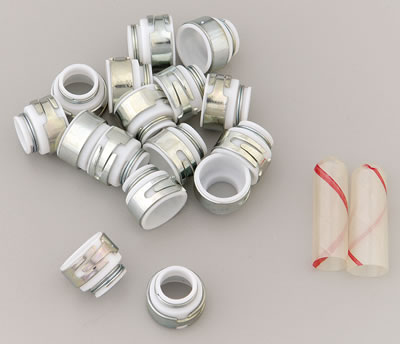
the two striped things are plastic valve seal alignment guides that are temporarily placed over the top of the valve stem, then oiled lightly, they are placed over the valve keeper lock grooves to prevent the seals being damaged during the valve seal installation process.
during assembly, the upper valve guides machined, the valve springs seats and shims are measured, the proper valve spring seat and shims are installed, the valve stems are lubed then slipped into the heads extending the valve stem up thru the valve guide, the valve is held fully seated, the plastic valve seal alignment guides that are temporarily placed over the top of the valve stem, then oiled lightly, then the tool you posted is used to seat the valve seal , once thats done the valve spring and retainer and keepers are installed.
ID point out that youll need to measure the valve stem and the valve seals, and install them correctly, I have seen several cases where guys just either slid the valve thru the seal and damaged the lips on the seal or installed the wrong size seals or had the valve seals come off the machined valve guides, that were either machined incorrectly or the seals were installed incorrectly, in all cases excessive oil burning was a result
the question of which is better, vitron or teflon comes up frequently with both having proponents, its been my experience that the care taken during the installation and selecting the correct size seals and lubing them as they are installed with valve seal lip protectors has a great deal of influence on how well either material will function,Ive used both and replaced hundreds of both types, the care taken during the installation seems to be more critical than the material they are made from, and neither material lasts for ever, you can assume they need replacing by 70k miles in most engines, if you see any exhaust smoke
(1)this is VERY common, on older engines with worn valve seals, valve guides or worn rings, especially if you've installed a slightly longer duration cam as the increased reversion pulses in the runners and plenum help spread oil mist thru out the intake at lower rpms, making it rather difficult to locate the exact source of the oil.
(2)theres also a very good chance that the intake base is not sealed correctly and one or more intake runners are sucking oil mist in the lower edge of the intake port gasket, from the lifter galley, as they do tend to harden and shrink on some engines over time with the engine heat cycles, and age, but in most cases one cylinder head will tend to be worse that the other with a defective gasket, this tends to be a clue as to the cause because if its rings or valve seals or valve guides both sides tend to wear equally.
(3) a defective PVC valve can be sucking oil into the plenum, but in this case its generally the rear runners far more than the front runners that get coated as the pvc vacuum connection tends to be near the rear runners
(4) if youve had the heads or intake machined the angle or clearances may no longer be compatible in matched angles and clearances causing the gap ,sometimes the gap between the end of the intake manifold and block china wall is too close so the intake can,t seal to the heads in the intake port gasket seal, allowing oil to enter the runner
(5) in some heads the rocker studs threads can allow oil to enter the intake ports if the threads were not coated with a sealant or the studs work loose over time
in most cases new intake gaskets with a thin bead of high temp silicone around each intake port , and carefully re tightening the manifold bolts is all thats required if the source of oil is the lifter gallery, but if its worn valve seals, guides or rings your going to need to get the problem repaired.
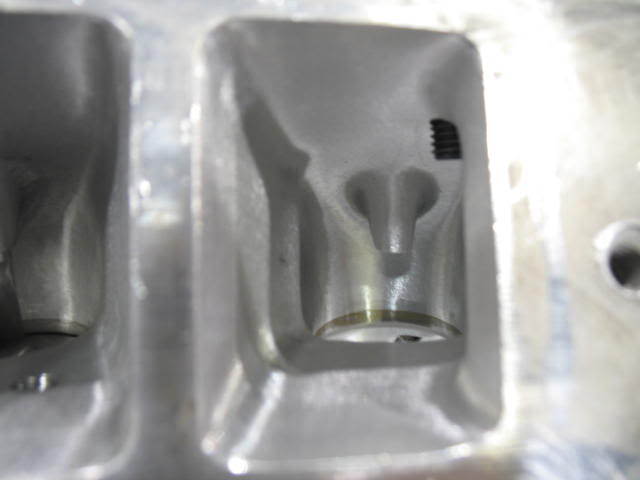
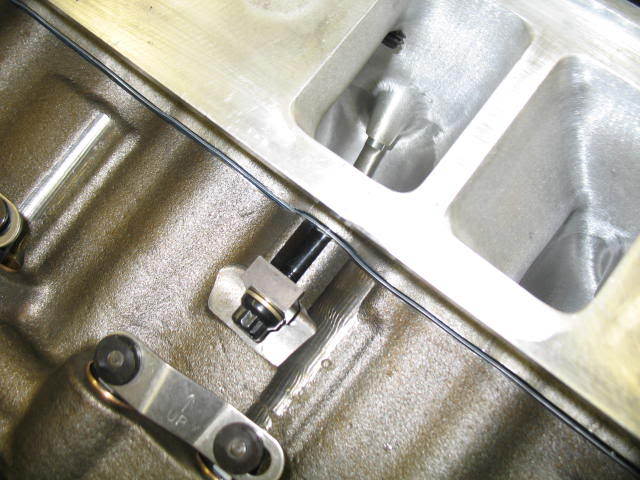
it should be noted that if the rocker stud protrudes into the port it should be trimmed to the port roof as any threads sticking down into the runner disrupt flow and don,t supply extra support to the rocker stud,and stud threads should use loc-tite tread sealant

a common cause of oil in intake ports is having the heads machined without matched changes to the intake, manifold, and gasket surfaces, but reversion pulses in the intake runners can and do transfer oil from the valve guides and oil mist,getting past piston rings into the intake runners due to reversion pulses
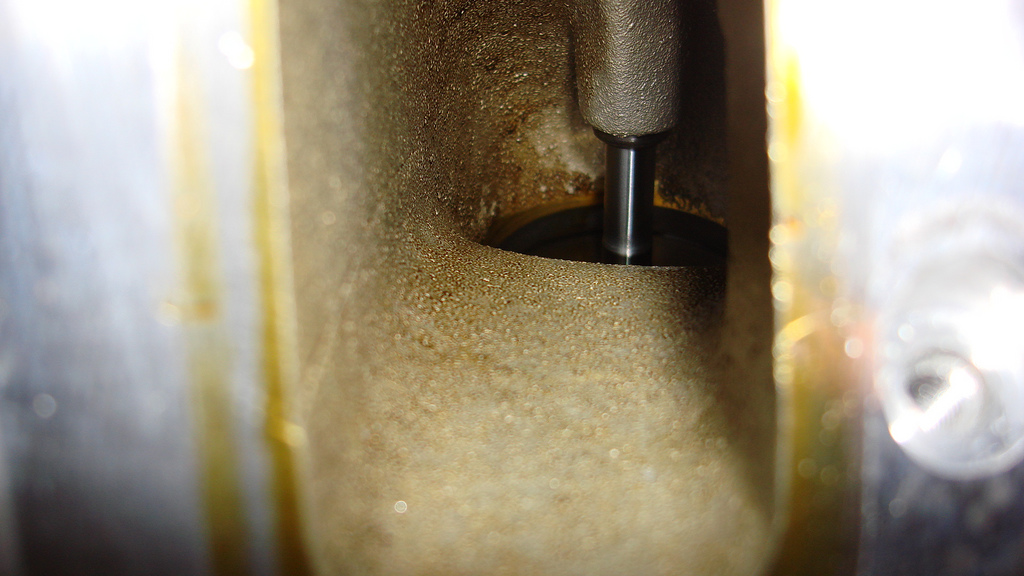
if it looks like this its usually, a leaking intake gasket or pvc, not bad valve seals or valve guides, those sources tend to leave the back of the valve and lower valve stem coated with burn sludge
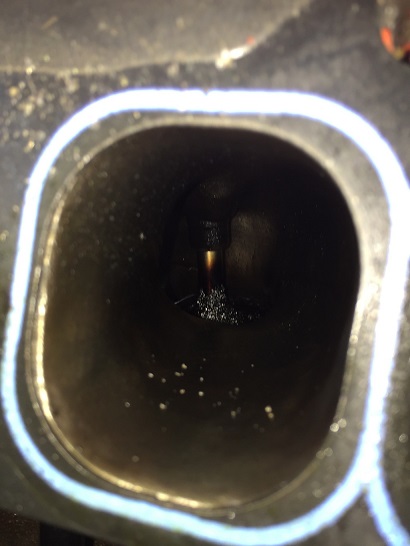
http://garage.grumpysperformance.com/index.php?threads/oily-crud-on-intake-valves.12083/#post-57903
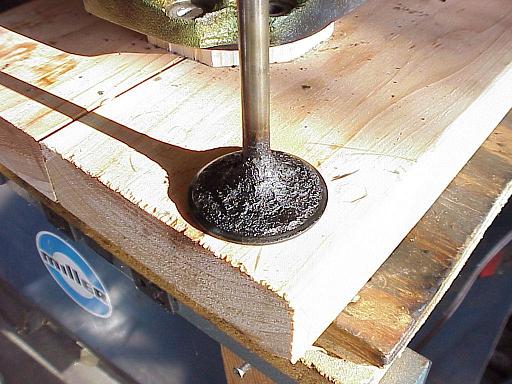
valves that look like this picture below frequently are the result of worn valve seals and guides, look closely youll see the intake valve stem stained with oil here but not in the pictures above where it was an intake gasket leak
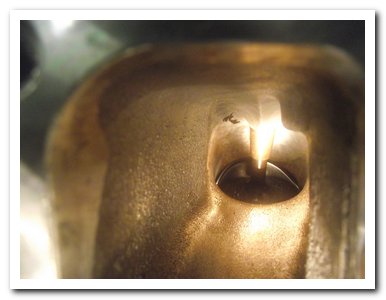
RELATED INFO
http://garage.grumpysperformance.com/index.php?threads/catch-can-related-info.4636/#post-12610
http://garage.grumpysperformance.co...reather-hole-in-valve-covers.2005/#post-35665
http://garage.grumpysperformance.co...gine-oil-fowling-spark-plugs.7692/#post-53056
http://garage.grumpysperformance.com/index.php?threads/intake-sucking-oil.4891/#post-24722
http://garage.grumpysperformance.co...-you-failed-emmision-testing.3522/#post-18430
viewtopic.php?f=50&t=2988&p=9055&hilit=angle+mill#p9055
viewtopic.php?f=52&t=4684&p=12683&hilit=valve+seals#p12683
viewtopic.php?f=52&t=4283&p=11290&hilit=valve+seals#p11290
http://garage.grumpysperformance.com/index.php?threads/catch-can-related-info.4636/#post-12610
viewtopic.php?f=53&t=4651&p=12516&hilit=valve+guides#p12516
viewtopic.php?f=87&t=4636&p=12451#p12451
http://garage.grumpysperformance.co...r-increased-detonation-risk.12937/#post-67258
http://www.enginebuildermag.com/Article ... signs.aspx
viewtopic.php?f=52&t=181&p=7156&hilit=valve+guides#p7156
viewtopic.php?f=50&t=4693&p=12720&hilit=valve+seals#p12720
viewtopic.php?f=44&t=1054&p=1990&hilit=valve+guides#p1990
oil on the plugs but mostly dry intake ports is usually rings,
soaked intake ports is usually a leaking intake gasket,usually sucking oil from the lifter gallery if you don,t use a thick enough intake gasket that gets compressed during the instal of the intake manifold or one thats been incorrectly angle milled, or mated to angle milled heads
oil only on the back of the valves and lower intake runner and plugs is usually bad valve seals and guides, but rarely its oil leaking thru the rocker stud threads if sealant on the threads was not used
but keep in mind REVERSION PULSES in the intake can spread oil over the runner and plenum in some cases
if youve ever installed a longer duration cam in a tuned port engine design, your very likely to find the intake runners show a light oil discoloration as the engines allowing those long runners to draw oil up out of the cylinders at lower idle speeds during the cams over lap timing.




do a google search on (SLIPV618)its a bore scope I use and it easily slides thru a spark plug hole
http://store.dejavujewelry.com/tlw-slipv618.html
While its not a totally definitive test , but it will give you a good bit more info
have a friend follow you in his car ,someplace safe , to test drive your car like a long stretch of back rural road,, put the car in gear and run it up during hard acceleration at full throttle to lets say 5000rpm, then suddenly let the throttle snap closed and let engine compression slow the car, heavier smoke during hard acceleration when cylinder pressures high and intake vacuum is low generally indicates worn rings or piston damage, heavier smoke during deceleration as you let the engine drag the cars speed down, when the cylinder pressures low and intake plenum vacuum is high generally indicates bad valve seals or worn valve guides, be aware that a leaking intake gasket can suck oil into the ports from the lifter gallery also. obviously a LEAK DOWN test in conjunction gives you a better picture as to the cause of the oils source
just be aware that oil in the runners doesn,t necessarily indicate a bad intake gasket because reversion pulse at low rpms can and does suck oil out of the cylinders into the intake runners even on engines with perfectly sealed intake gaskets if the ring seal or valve guides are worn
a leaking intake gasket or leaky head gasket will fairly frequently suck oil mist from the lifter gallery., or allow coolant to seep into the combustion chamber only after the engine heats up and parts expand, and oil thins, and/ or coolant pressure increases and if the intake sucking oil mist will usually burn to ash during combustion, leaving that residue , now obviously if the amount of oil mist or coolant entering the cylinder is minimal the smoke or lack of smoke due to complete or almost complete combustion will be minimal

the two striped things are plastic valve seal alignment guides that are temporarily placed over the top of the valve stem, then oiled lightly, they are placed over the valve keeper lock grooves to prevent the seals being damaged during the valve seal installation process.
during assembly, the upper valve guides machined, the valve springs seats and shims are measured, the proper valve spring seat and shims are installed, the valve stems are lubed then slipped into the heads extending the valve stem up thru the valve guide, the valve is held fully seated, the plastic valve seal alignment guides that are temporarily placed over the top of the valve stem, then oiled lightly, then the tool you posted is used to seat the valve seal , once thats done the valve spring and retainer and keepers are installed.
ID point out that youll need to measure the valve stem and the valve seals, and install them correctly, I have seen several cases where guys just either slid the valve thru the seal and damaged the lips on the seal or installed the wrong size seals or had the valve seals come off the machined valve guides, that were either machined incorrectly or the seals were installed incorrectly, in all cases excessive oil burning was a result
the question of which is better, vitron or teflon comes up frequently with both having proponents, its been my experience that the care taken during the installation and selecting the correct size seals and lubing them as they are installed with valve seal lip protectors has a great deal of influence on how well either material will function,Ive used both and replaced hundreds of both types, the care taken during the installation seems to be more critical than the material they are made from, and neither material lasts for ever, you can assume they need replacing by 70k miles in most engines, if you see any exhaust smoke
(1)this is VERY common, on older engines with worn valve seals, valve guides or worn rings, especially if you've installed a slightly longer duration cam as the increased reversion pulses in the runners and plenum help spread oil mist thru out the intake at lower rpms, making it rather difficult to locate the exact source of the oil.
(2)theres also a very good chance that the intake base is not sealed correctly and one or more intake runners are sucking oil mist in the lower edge of the intake port gasket, from the lifter galley, as they do tend to harden and shrink on some engines over time with the engine heat cycles, and age, but in most cases one cylinder head will tend to be worse that the other with a defective gasket, this tends to be a clue as to the cause because if its rings or valve seals or valve guides both sides tend to wear equally.
(3) a defective PVC valve can be sucking oil into the plenum, but in this case its generally the rear runners far more than the front runners that get coated as the pvc vacuum connection tends to be near the rear runners
(4) if youve had the heads or intake machined the angle or clearances may no longer be compatible in matched angles and clearances causing the gap ,sometimes the gap between the end of the intake manifold and block china wall is too close so the intake can,t seal to the heads in the intake port gasket seal, allowing oil to enter the runner
(5) in some heads the rocker studs threads can allow oil to enter the intake ports if the threads were not coated with a sealant or the studs work loose over time
in most cases new intake gaskets with a thin bead of high temp silicone around each intake port , and carefully re tightening the manifold bolts is all thats required if the source of oil is the lifter gallery, but if its worn valve seals, guides or rings your going to need to get the problem repaired.


it should be noted that if the rocker stud protrudes into the port it should be trimmed to the port roof as any threads sticking down into the runner disrupt flow and don,t supply extra support to the rocker stud,and stud threads should use loc-tite tread sealant

a common cause of oil in intake ports is having the heads machined without matched changes to the intake, manifold, and gasket surfaces, but reversion pulses in the intake runners can and do transfer oil from the valve guides and oil mist,getting past piston rings into the intake runners due to reversion pulses

if it looks like this its usually, a leaking intake gasket or pvc, not bad valve seals or valve guides, those sources tend to leave the back of the valve and lower valve stem coated with burn sludge

http://garage.grumpysperformance.com/index.php?threads/oily-crud-on-intake-valves.12083/#post-57903
valves that look like this picture below frequently are the result of worn valve seals and guides, look closely youll see the intake valve stem stained with oil here but not in the pictures above where it was an intake gasket leak

RELATED INFO
http://garage.grumpysperformance.com/index.php?threads/catch-can-related-info.4636/#post-12610
http://garage.grumpysperformance.co...reather-hole-in-valve-covers.2005/#post-35665
http://garage.grumpysperformance.co...gine-oil-fowling-spark-plugs.7692/#post-53056
http://garage.grumpysperformance.com/index.php?threads/intake-sucking-oil.4891/#post-24722
http://garage.grumpysperformance.co...-you-failed-emmision-testing.3522/#post-18430
viewtopic.php?f=50&t=2988&p=9055&hilit=angle+mill#p9055
viewtopic.php?f=52&t=4684&p=12683&hilit=valve+seals#p12683
viewtopic.php?f=52&t=4283&p=11290&hilit=valve+seals#p11290
http://garage.grumpysperformance.com/index.php?threads/catch-can-related-info.4636/#post-12610
viewtopic.php?f=53&t=4651&p=12516&hilit=valve+guides#p12516
viewtopic.php?f=87&t=4636&p=12451#p12451
http://garage.grumpysperformance.co...r-increased-detonation-risk.12937/#post-67258
http://www.enginebuildermag.com/Article ... signs.aspx
viewtopic.php?f=52&t=181&p=7156&hilit=valve+guides#p7156
viewtopic.php?f=50&t=4693&p=12720&hilit=valve+seals#p12720
viewtopic.php?f=44&t=1054&p=1990&hilit=valve+guides#p1990
Last edited by a moderator:
